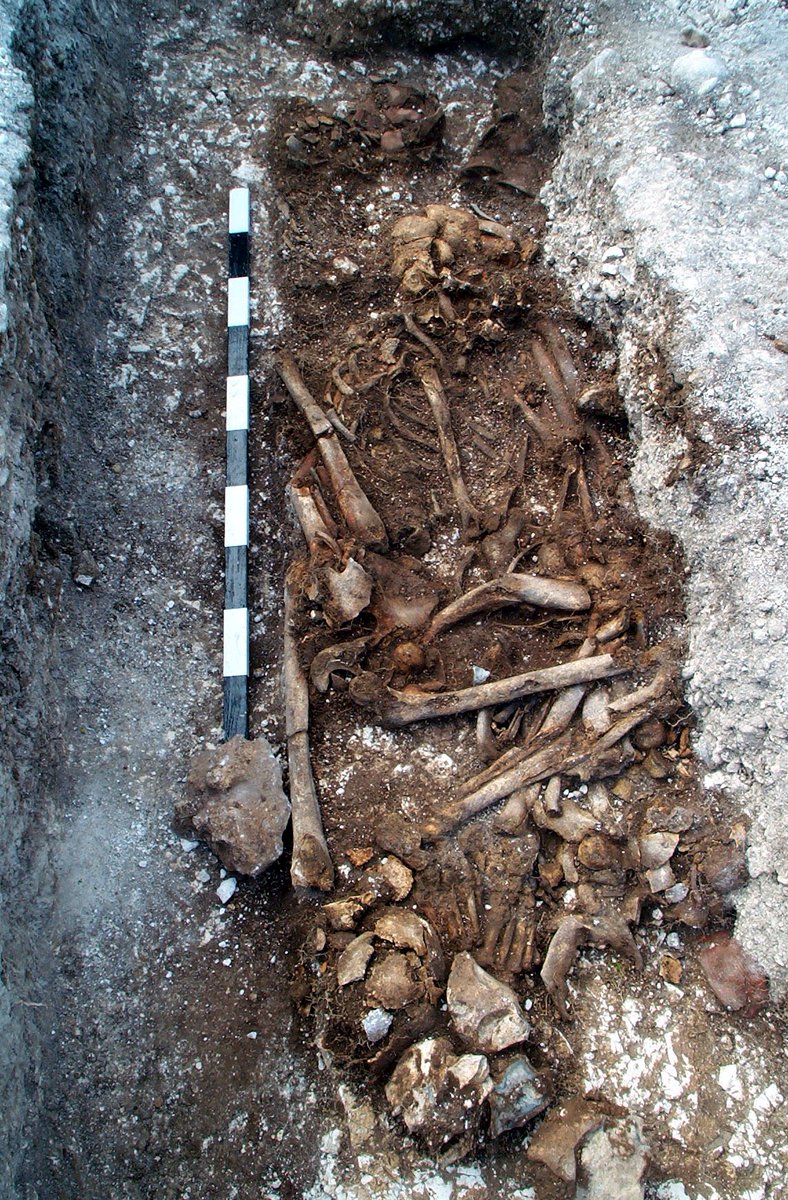
Our Bronze Age Roundhouse virtual reality experience case study is now live ⚡
Jono Sutton, our in-house 3D Environment Artist, has created an engaging and informative 3D reconstruction of the Bronze Age Roundhouse excavated at Bitham Park, Westbury 👨🎨
#wessexarchaeology
Jono Sutton, our in-house 3D Environment Artist, has created an engaging and informative 3D reconstruction of the Bronze Age Roundhouse excavated at Bitham Park, Westbury 👨🎨
#wessexarchaeology

Wessex Archaeology was commissioned by RPS Consulting Services Ltd on behalf of Barratt David Wilson Homes to undertake a large-scale excavation.
#wessexarchaeology #wessexarch #virtualreality #bronzeage #postexcavation #archaeology #history #heritage #heritageinterpretation
#wessexarchaeology #wessexarch #virtualreality #bronzeage #postexcavation #archaeology #history #heritage #heritageinterpretation

The excavation revealed evidence from the Bronze Age including a field system, ring ditch and a unique ‘palisaded’ enclosure around a central roundhouse.
#wessexarchaeology #wessexarch #virtualreality #bronzeage #postexcavation #archaeology #history #heritage
#wessexarchaeology #wessexarch #virtualreality #bronzeage #postexcavation #archaeology #history #heritage

The bespoke 3D reconstruction can be displayed through Augmented Reality and Virtual Reality, giving a real feel of what life may have been like in the Bronze Age.
#wessexarchaeology #wessexarch #virtualreality #bronzeage #postexcavation #archaeology #history #heritage
#wessexarchaeology #wessexarch #virtualreality #bronzeage #postexcavation #archaeology #history #heritage

Using real-life archaeological evidence and in close consultation with our experts, Jono has created this sophisticated visualisation of what the house would have looked like within its original landscape. 🗺
#wessexarchaeology #wessexarch #virtualreality #bronzeage
#wessexarchaeology #wessexarch #virtualreality #bronzeage
The Bronze Age roundhouse VR experience centres on the northern settlement area uncovered during excavations, which was dated to the Late Bronze Age. This roundhouse was one of at least two associated roundhouses within a small settlement outside the palisaded area.
#wessexarch
#wessexarch

It would also have been surrounded by several small square and rectangular four and six post-built structures which Jono has reconstructed within the VR Environment.
#wessexarchaeology #wessexarch #virtualreality #bronzeage #postexcavation #archaeology #history #heritage
#wessexarchaeology #wessexarch #virtualreality #bronzeage #postexcavation #archaeology #history #heritage
A range of prehistoric pottery was recovered during the excavation, from Beaker to Late Bronze Age. This assemblage is likely to represent domestic activity and has been reflected in the Beaker ware inside the VR roundhouse. 🔥
#wessexarchaeology #wessexarch #virtualreality
#wessexarchaeology #wessexarch #virtualreality
The techniques used to create our 3D reconstruction are similar to those used in computer games. The 3D model is made from polygons (modifiable geometry components) which are used to represent surfaces
#wessexarchaeology #wessexarch #virtualreality #bronzeage #postexcavation
#wessexarchaeology #wessexarch #virtualreality #bronzeage #postexcavation
Texture maps (2D images) are projected onto the polygons to colour and enhance the model. The digital models are then assembled in a game’s engine which calculates how the models are lit
#wessexarchaeology #wessexarch #virtualreality #bronzeage #postexcavation #augmentedreality
#wessexarchaeology #wessexarch #virtualreality #bronzeage #postexcavation #augmentedreality
In our fly throughs you can explore the roundhouse and discover a large cooking pot boiling over a fire, a warp weighted loom, a Palstave Axe, beds, benches, bowls, and pots.
🔗Check out the link below to view the full case study -
wessexarch.co.uk/.../bronze-age…...
#wessexarch
🔗Check out the link below to view the full case study -
wessexarch.co.uk/.../bronze-age…...
#wessexarch
• • •
Missing some Tweet in this thread? You can try to
force a refresh
















